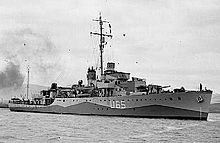HMNZS Aotearoa arrives at RIMPAC 2024

The Royal New Zealand Navy maritime sustainment vessel HMNZS Aotearoa is in Pearl Harbor, readying to be a major part of the New Zealand Defence Force’s (NZDF) contribution to Exercise Rim of the Pacific 2024 (RIMPAC 24).
02 July, 2024
RIMPAC is a biennial multi-national combined exercise, hosted by the United States Navy, focused on all aspects of maritime-based warfare disciplines. It is the largest maritime exercise in the world, involving approximately 29 nations, 40 surface ships, 3 submarines, 150 aircraft and 25,000 personnel.
The harbour phase of the exercise is currently underway which involves HMNZS Aotearoa’s crew attending planning meetings, symposiums, sports competitions and cultural exchanges.
HMNZS Aotearoa, which arrived in Pearl Harbor last week, will sail in company with the other participating ships on Monday 8 July 2024 for the sea phase of the exercise.
This will include a range of maritime warfare focused scenarios such as amphibious operations, gunnery, missile, anti-submarine, and air defence exercises, as well as military medicine, humanitarian assistance, disaster relief, counter-piracy, mine clearance operations, explosive ordnance disposal, and diving and salvage operations.
During this phase of the exercise, HMNZS Aotearoa will play a large part in sustaining the coalition force by resupplying other ships with fuel, food, spare parts and ammunition.
Speaking to a delegation of international visitors to the ship, HMNZS Aotearoa’s Commanding Officer, Commander Rob Welford, quoted an excerpt from the Navy haka explaining “this means we stand strong, we stand staunch, we stand together as sailors. This call aligns with the key theme of RIMPAC 24: partners integrated and prepared”.
The NZDF is contributing around 250 personnel to the exercise including the ship’s crew, operational divers from HMNZS Matataua, a Royal New Zealand Air Force P-8A Poseidon aircraft and air detachment, medical personnel, a dental team and other New Zealand Defence Force personnel operating in various headquarters and supporting units.
Photo by Seaman Juan Cordova, U.S. Navy












